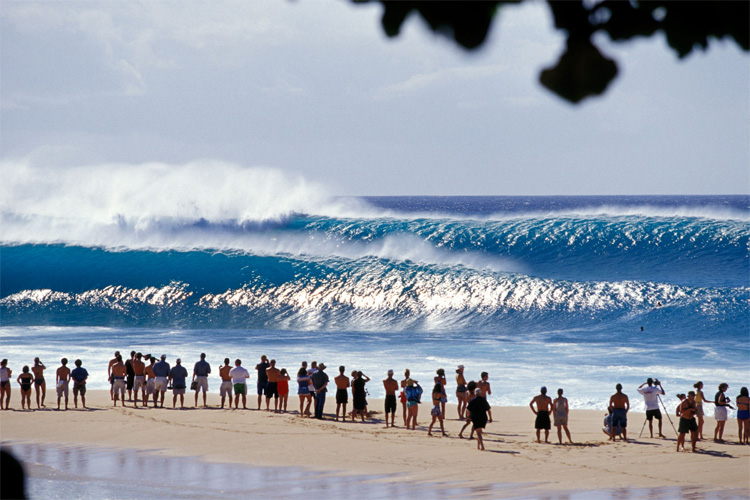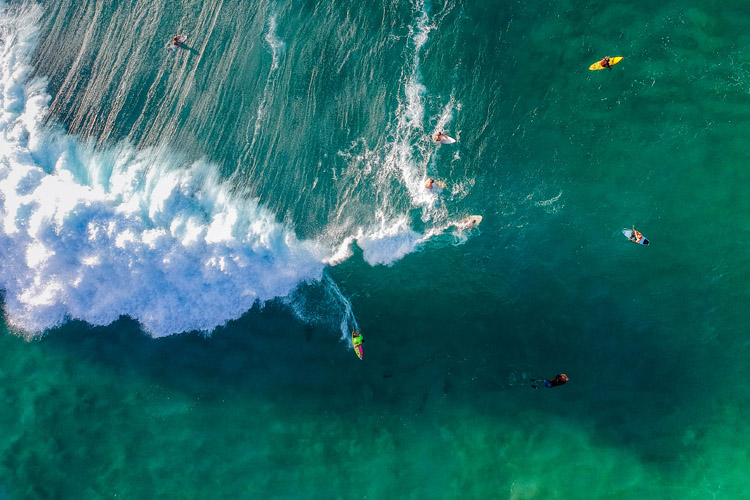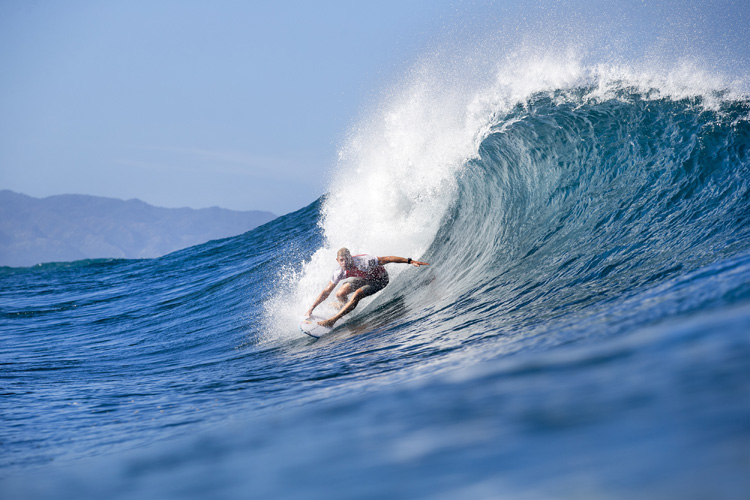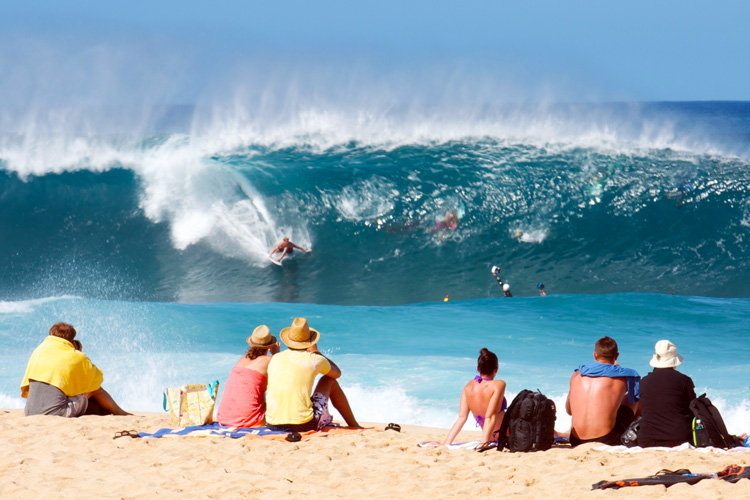Surfing Pipeline is the dream of many surfers. But the ultimate wave is not for the faint-hearted. You'll need to learn its secrets before giving it a go. Let's break them down.
Many surfers wonder how it feels to paddle out at Pipeline. What does the wave look like when you're out there? Is the barrel really scary? How should I angle the surfboard to make a successful drop?
People have died surfing the Pipeline, which tells you a lot about the spot located on the North Shore of Oahu, Hawaii.
At Banzai Pipeline, words like fear and hesitation are not welcome. You need to trust your instincts and paddle for waves with your confidence levels on a high note.
Pipeline is one of the most exciting surfing waves on the planet, but it is also one of the most dangerous surf breaks you could possibly get.
Not only will it present you with a steep take-off, but it will also force you to generate high speed in a matter of seconds.
And then, you'll meet the barrel. A hollow, wide, thunderous, and liquid blue cylinder that will test you to your limits.
Pipe is a gnarly, intimidating, and sometimes unpredictable wave-riding gem that breaks in shallow waters.
It is the ultimate wave of the Seven Mile Miracle, and it is quite easy to understand why.
Charging Pipeline is a once-in-a-lifetime experience that you will carry for the rest of your life, no matter how good or bad it is.
Any time you get barreled at the mother of all waves, you feel a sense of rush and exhilaration that often ends with you being spat out of the tube by the liquid spray.
There are many Pipeline days. You can surf the North Shore of Oahu on a waist-high day, but you can also go for it on a double overhead Pipe with occasional waves breaking at Second Reef and Third Reef.

The first thing you need to do is to observe and study the wave. The more you analyze Pipeline from the beach, the more you learn its intricate secrets.
Pipeline is not a wave for first-timers, beginners, or intermediate surfers with a lack of confidence and average with below average basic skills.
You'll need to master the art of reading waves and perform a solid bottom turn.
If you feel you're ready, paddle out on a small day just to get used to the currents, the swell period, the locals, and the coral bottom.
On a medium-sized day, try the insiders or stay on the shoulder, watching the locals ride it flawlessly.
For safety reasons, make sure you put a short-arm steamer wetsuit on and think of wearing a helmet. You don't want to wipe out and hurt yourself at Pipeline.
The Crowd Factor
Pipeline is always a crowded surf break. Not only because it is surfed on a daily basis by hundreds of Hawaiians but also because it is the training ground for thousands of international pro surfers.
As a result, you'll hardly surf alone, especially on a good day. You'll be shoulder-to-shoulder in the peak with veterans, legends, and stars of the sport.
And then, bodyboarders, bodysurfers, and dozens of surf photographers and videographers eager to capture the beauty of the beast.
That's why getting a great wave at Pipeline is a tricky and sometimes impossible mission. So, luck is not a negligible factor.
Remember to never drop in on the local surfers.
Otherwise, you'll get into unnecessary trouble. Just wait for your turn, even if that means waiting patiently for hours.

Swell Angles and Wind
The best swell angles for Pipeline are anything that comes from the Pacific within the WNW-NW window.
For classic Pipe conditions, you'll need to paddle out on an 8-to-18-foot surf day. A slight west-angled swell will create more open, hollow waves.
As a rule of thumb, Pipeline works better on a medium tide. Too much sand on the reef will generate thunderous closeouts.
As for the wind, the queen of the North Shore prefers light northeast trade winds.
The Pipeline is a sensitive wave. Subtle changes in swell and wind can transform a perfect session into a painful nightmare. That said, keep your eyes open.

The Technical Approach
On a perfect tube riding day, an overhead Pipe wave will require you to master the late drop.
So, the trick is to keep a low stance, negotiate a deep bottom turn, pump for speed, and lean on your inside rail for the barrel.
In some cases, there's just not enough time for the bottom turn. You'll need to angle the board as much as you can, elevator drop, and grab the rail for salvation.
In other words, and make things simple, it's all about taking off fast and pulling in quickly. Whenever you pick a wave, paddle as hard as you can, commit, and don't look back.
Never take off on the lip, and try to make it to the other side.
If you fall or go over the falls, try to penetrate the water with your feet first and cover your head with your arms for protection.
Depending on the conditions, you'll need a thick surfboard between 6'6'' and 7'8''. The goal is to get into the wave as quickly as possible.
Pipeline is a left-hand wave only. If you find yourself surfing a right-hander, then you're riding Backdoor.
Time and practice will help you surf the Pipeline. But make no mistake: you can't tame this wave. She's the one who rules your surfing, so respect the spot and spread the Aloha.
Remember that the day you decide you're ready to surf the Pipeline, you'll be putting your life at risk, and you may also hurt others in the process.
If you wipe out, hold your breath and try to stay calm.
Have you injured yourself? Call for help: surfers and lifeguards may save you from drowning.
